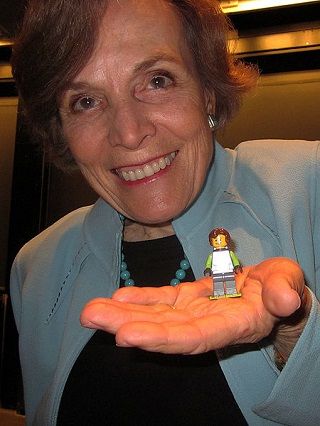Great Conference on Clean Energy: ARPA-e Show in Washington, DC
I was deeply disappointed that a family matter forced me to skip what is most certainly the world’s single best conference on energy innovation: the ARPA-e (Advanced Research Projects Agency – energy) show in Washington, DC.
We’re talking about a) the presence of 3000 high-level people in the industry, b) a very well-vetted set of 250 exhibits showcasing cutting-edge technologies, and c) some really good sessions with the planet’s top experts on the subject. The good news is that, though it pained me to miss out on the first two ingredients, the third was videotaped and put online for the benefit of us all. I spent a fair amount of time on this today, and I plan to work my way through all of it by the end of the week.
In her brilliant and poignant keynote on the ecological devastation that humankind is wreaking on the waters of Earth, legendary oceanographer Dr. Sylvia Earle (pictured) ended her talk on an upbeat note, which I paraphrase: we live in the most important time in history; we have the opportunity to do more to affect the quality of life here and now than anyone ever had in the past. (Trust me, she said it better than I did).
Then, check out Thomas L. Friedman. Frankly, I go back and forth on Friedman’s real value as an icon in modern-day journalism, but he clearly had some outstanding words of wisdom to impart here about succeeding in the hyper-connected world.
When you’re finished with both of those, I recommend the panel discussion that included NRG Energy’s David Crane, CEO of North America’s second-largest power generation company, and Richard Lester, professor of Nuclear Science and Engineering at MIT. They take on some tough issues, including this one:
Is there really a future for the grid? If this sounds like a stupid question, let me ask you this: If I had asked you 30 years ago if you thought that land-line telephones would be in the process of disappearing in favor of cell phones, wouldn’t you have laughed at me? Obviously, no one predicted the hockey stick growth of five billion cell phones, but, in the aftermath of Superstorm Sandy, no one even thought about rebuilding the copper infrastructure in Eastern New Jersey, insofar as it was already rapidly falling into disuse.
Will the grid, largely based on 130 million telephone poles, being destroyed with ever-more frequent storms, still be the way we deliver energy in 30 years, given the swift-moving trends in distributed generation/microgrids, energy storage, efficiency (meaning zero/negative growth in demand, at least in the developed world), and increasing levels of concern about carbon?
We think that will come slowly, because it always has in the past. But couldn’t the future look very different than the past? The people at AT&T in the 1990s who were betting on copper don’t look that bright now, do they? And it’s not because they weren’t smart; it’s because the 21st Century has the power to bring about huge volumes of change, very quickly, virtually overnight.
I hope you’ll enjoy. I’ll try not to miss this one next year.

